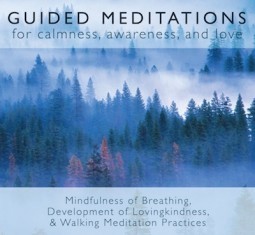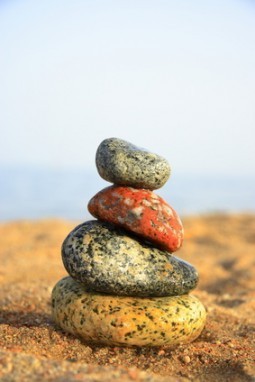Bodhipaksa's Blog, page 17
December 24, 2013
Simplicity rocks
Please do take a look and let me know what you think. ?

Open mind: focused mind | Wildmind Buddhist Meditation
One of my online students asked a really excellent question in relation to mindful eating, and in fact in relation to mindful activity more generally: Should
Related posts:
Open mind: focused mind
Simplicity
Mindfulness and education
Related posts brought to you by Yet Another Related Posts Plugin.

Our fundraising just passed $15,000! We have 10 days left to reach our $22,000 goal….

The Free Bodhi Fund
Seeking seed money to employ a business manager for Wildmind so we can free Bodhipaksa up to write, create, and benefit more people by teaching meditation.
Related posts:
Our Indiegogo project just passed $14,000!
Almost $12,000 raised so far for the Free Bodhi project!
Another milestone reached
Related posts brought to you by Yet Another Related Posts Plugin.

December 21, 2013
My gods, this is magnificent.?
Related posts:
A guided meditation #throughglass
When Google ships V2 in exchange for a V1, do they include new lenses? My dark shades…
Funny!
Related posts brought to you by Yet Another Related Posts Plugin.

December 20, 2013
I still have three invites
Related posts:
Funny!
Bright fall leaves on a gray day…
Free Market Jesus speaks…
Related posts brought to you by Yet Another Related Posts Plugin.

December 19, 2013
Open mind: focused mind
 One of my online students asked a really excellent question in relation to mindful eating, and in fact in relation to mindful activity more generally:
One of my online students asked a really excellent question in relation to mindful eating, and in fact in relation to mindful activity more generally:
Should I focus on one specific sensation? But if I do so, isn’t it restrictive, replacing mindfulness of the whole experience of eating by concentration on only one of its aspects? In fact, I already faced similar questions when trying walking meditation. Walking involves so many movements, so many sensations… How to be mindful of all of them?
There are really two different modes of mindful attention, one of which is more narrowly focused, while the other is more open. Each is valuable in its own way.
Mindful, Focused Awareness
A narrow focus involves, as I’m sure is obvious, paying attention to (more or less) one thing at a time. So as you’re paying attention to the texture of what you’re eating, the flavor moves into the background (and vice versa), and you probably aren’t even noticing things like your breathing or the sensation of your feet on the floor.
The fact that you’re focusing on one thing to the exclusion of others doesn’t mean that you’re being unmindful.
Your attention to the focal point of your experience is deliberate.
You’re aware of what you’re doing and why you’re doing it.
You’re probably aware of significant connections between the focal point and other aspects of your experience — like how you’re feeling.
 If you like my articles and want to support the work I do, please click here to check out my books, guided meditation CDs, and MP3s. Or you can make a donation.These are the hallmarks of mindful attention. So we can be mindful and also have the mind focused.
If you like my articles and want to support the work I do, please click here to check out my books, guided meditation CDs, and MP3s. Or you can make a donation.These are the hallmarks of mindful attention. So we can be mindful and also have the mind focused.
Buddhist meditation techniques that lead to jh?na/dhy?na (what could be called “flow” states in meditation) employ this approach of focusing our attention predominantly on one thing. Jh?na meditation leads to a progressive narrowing of our field of attention, so that the mind becomes very one-pointed and still.
Which “one thing” we’re paying attention to in our meditation or in any other mindful activity may change. In a body scan, or walking meditation, or mindfulness of breathing, or in mindful eating, our attention will tend to pick out different experiences as they become more prominent, or simply as we seek them out. But this is all done mindfully.
It is of course possible to focus on one thing in a very unmindful way, and in fact that’s what we do much of the time. We’re not consciously aware that we’re focused on one thing, we haven’t made a conscious choice to do so, and we’re probably not aware of the connections between what we’re focusing on and other aspects of our experience — for example we may be focusing on a particular thought, and that thought is making us stressed, and we’re not particularly aware that we’re doing this to ourselves. And again the thing we’re focusing on may change. We’ll jump from one thought to another to another without even realizing that we’re doing this. This is what people call “monkey mind.”
Mindful, Open Awareness
Then there’s mindful attention that’s more open. Here we have a very relaxed attention, and your physical gaze may well be more unfocused as well. And you’ll not be making any particular effort to focus on anything, although there may be a lightly held focal point within a broad field of awareness. (This is like sitting with your eyes lightly resting on a focal point, but you’re simply being aware of everything that’s within your visual field.)
In open awareness we’re open to all and any sensations that arise within consciousness. It can happen in walking meditation or sitting meditation, and in my own experience it’s most likely to arise after a period of body scanning, or once I’ve settled into the practice. You’ve checked out your experience and now you’re content not to focus on anything in particular.
It’s not that your focused attention is running around, collecting up all the different sensations that are arising and collecting them into a sense of a whole. The way I think of it is this: every sensation that’s arising within your being is constantly being presented to the brain. Even if you’re not paying attention at all to the sensation of your clothing on your body, the nerves on your skin are constantly sending sensations up the brain. But these sensations are being screened out in favor of focusing on one thing at a time, so that we don’t notice them unless, perhaps, something changes.
In open awareness, what we’re doing is letting go of any effort to focus. And in doing so, we become aware of all the different sensations that are arriving in the brain but which haven’t been entering your conscious awareness because they’ve been screened out. We don’t make open awareness happen. We relax into it.
This isn’t to say that focused attention is willful, as opposed to being relaxed. We certainly can have a narrow and willful focus, but the point of jh?na meditation is to allow the mind to be effortlessly absorbed into a narrower focus. Jh?na is often called “absorption” for this reason.
Alternating our mode of attention
Even within a state of open awareness, though, you’ll find that from time to time some experience arises that requires your attention. So there may be a physical ache, or an emotional feeling, or a particular sound that you’re hearing, and you may want or need to mindfully focus on that. And when you do so, you’re back to meditating in a more narrow and focused way. Then once you’ve paid attention to whatever has arisen that’s demanding your attention, and you feel it’s time to let go of that, you can return to a more open awareness again.
So there can be this oscillation between open awareness and focused awareness.
With something like mindful eating, the nature of the exercise is that you’re paying attention to a particular experience, so it’s more likely that you’ll be in a state of relatively focused attention, with your mind tuning in to various experiences connected with the sensations involved.
With something like walking meditation or mindful breathing, though, you may find that after some initial “body scanning,” where you focused attention has explored the various sensations that are arising, the mind can relax into a more expansive state.
It’s certainly an interesting exercise to sit and take one sensation from the breathing and allow yourself to pay close attention to it, and then to relax back into a more open and expansive state. And then after a while you can go back to a narrower focus, and then back to expansive awareness again. It’s kind of like a gentle “workout”!
Anyway, the main point I want to make is that we can have a mindful attention that’s either focused or open, and both have value. Neither is really “better” than the other, and in fact they complement each other and we need to practice both modes of attention.
Related posts:
Breathe easy to combat anxiety: The mind tricks that can alleviate symptoms
An awareness imbued with compassion (Day 49)
How meditation can help students to stay focused and improve their grades
Related posts brought to you by Yet Another Related Posts Plugin.

Our Indiegogo project just passed $14,000!
Do feel free to check out our perks and to make a contribution.?

The Free Bodhi Fund
Seeking seed money to employ a business manager for Wildmind so we can free Bodhipaksa up to write, create, and benefit more people by teaching meditation.
Related posts:
Almost $12,000 raised so far for the Free Bodhi project!
The Free Bodhi project is now 53% funded!
Another milestone reached
Related posts brought to you by Yet Another Related Posts Plugin.

December 18, 2013
When you’re afraid of meditating
 For various reasons, we can sometimes experience a fear of meditating. We may know that meditating would help us, but we find the thought of getting on the cushion terrifying. Perhaps we bury ourselves in distractions in order to keep the fear at bay.
For various reasons, we can sometimes experience a fear of meditating. We may know that meditating would help us, but we find the thought of getting on the cushion terrifying. Perhaps we bury ourselves in distractions in order to keep the fear at bay.
If this is something you experience, how can you deal with it? I’d suggest that rather than “be tough” and forcing yourself to meditate, it would be more useful to be accepting and compassionate toward your anxiety. Your anxiety isn’t intending to be your enemy — it thinks it’s protecting you from some kind of danger. It’s misguided rather than “bad.” So what you need is reassurance.
I encourage people to notice where the anxiety is most strongly centered in the body (often it’s the solar plexus, where there are lots of nerves that get activated when fear is aroused).
Then, as best you can, let the anxiety be there. The part of your brain that’s generating the anxiety is already expecting an attack, so do you really want to confirm its fears by being the one who does the attacking? So let go of any thoughts about how anxiety is bad, or how it shouldn’t be there, or how you shouldn’t be anxious, or how there’s something wrong with you for being anxious. If those thoughts arise, don’t encourage them. Just note their arising and relax back into your experience of the body. Your anxiety is just a sensation in the body. It’s not (if you’re anxious about meditating) a sign that there’s something wrong, or that there’s something wrong with you. It’s OK to feel anxious. You can reassure yourself about this by saying, “It’s OK to feel this. Let me feel this.”
What the anxious part of you needs is kindness and reassurance. So try putting your hand on your solar plexus and saying to your anxiety, “I love you, and I want you to find peace. May you be happy.” You can make reassuring movements with your hand as you do this. If the anxiety is specifically about meditating, then you can add things like, “It’s OK. We can do this. I know you’re afraid, but we can handle this.” Become your own healer.
At this point you’re already meditating, so you can just sit where you are and continue. Perhaps after some time you can gently move to your meditation place.
As Rilke wrote, “Be of good courage. All is before you, and time passed in the difficult is never lost.”
Related posts:
Your anxiety deserves your love
Business Insight: To lead, don’t be afraid to pause
Keeping a level head while meditating
Related posts brought to you by Yet Another Related Posts Plugin.

December 17, 2013
When Google ships V2 in exchange for a V1, do they include new lenses? My dark shades…
Related posts:
What Republicans demanded in exchange for not shutting down the government.
On the Way: New Google Glass
Some people seem genetically programmed to look on the dark side…
Related posts brought to you by Yet Another Related Posts Plugin.

Some of your “distractions” are not distractions
 One of my students recently commented: “I regularly have to readjust my posture, which slightly changes now and then without my noticing it. These readjustments distract me from focusing on the body/breathing.”
One of my students recently commented: “I regularly have to readjust my posture, which slightly changes now and then without my noticing it. These readjustments distract me from focusing on the body/breathing.”
What I suggested was that she might usefully reframe how she was seeing this situation.
If you’re being mindful of your body and making adjustments to your posture, then in a very important way this isn’t distracting you from your body. Making readjustments like this doesn’t even have to take you away from your breathing, since you can maintain awareness of your breathing and make adjustments in your posture in time with the in-breaths and out-breaths. For example if you need to open or straighten the body, then allow that to happen on the in-breath. If you need to relax the body, let that happen on the out-breath. If there’s pain or tension, then imagine your breathing flowing through and around the area of discomfort.
You can certainly do all of this in a mindful way, and so you don’t have to think in terms of your being distracted, which leads to a sense that you’re not doing the meditation correctly, which probably involves an element of judgement and aversion, which probably leads to a loss of mindfulness.
There are times when we simply need to pay attention to the body in this way. It may be that we don’t have our posture set up quite right, or we’re tired, or there’s some discomfort in our experience. And in those situations it’s actually a mindful thing to give the body the attention it needs.
What is a distraction is anxiety. When we’re worrying that we’re “not doing it right” we’re making judgements about ourselves, and probably getting into a state of mind that isn’t very mindful. It’s actually our attitudes to our experiences that are our distractions, not the experiences themselves.
Aversion is also a distraction. When you think that making adjustments to your posture is something you shouldn’t have to do, then the whole experience is something that you resent doing. And you may be paying attention to the body, but you’re not being mindful of your resentment, and so you’re not really being mindful.
So just keep coming back to the question, “How am I relating to my experience? Am I relating with craving, aversion, or anxiety? Or am I relating with curiosity, kindness, and acceptance?” It doesn’t matter what the experience is — it can be a vehicle for becoming more mindful.
Related posts:
Day 10 of Wildmind’s 100 Day Meditation Challenge
Day 15 of Wildmind’s 100 Day Meditation Challenge
Six ways of reflecting on impermanence
Related posts brought to you by Yet Another Related Posts Plugin.

December 16, 2013
Sherry Turkle on The Documented Life

The Documented Life
We constantly interrupt our experiences to make a record of them.
Related posts:
By the Waters of Lethe, there I sat down…
“To be creative means to consider the whole process of life as a process of birth, and not to take any stage of life as a final stage.” Eric Fromm
Day 32 of Wildmind’s 100 Day Meditation Challenge
Related posts brought to you by Yet Another Related Posts Plugin.




